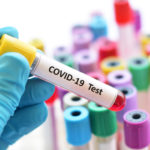
The Role of Lp(a) in ASCVD
The Role of Lp(a) in ASCVD
Atherosclerotic cardiovascular disease or ASCVD for short, is caused by plaque build-up in arterial walls and refers to conditions such as:
- Coronary Heart Disease (CHD)
- Cerebrovascular disease
- Peripheral artery disease
- Aortic atherosclerotic disease
Presently, ASCVD-related conditions remain the leading cause of morbidity and mortality globally (ACC) with many cases being linked to the lack of preventive strategies and uncontrolled ASCVD risk factors in many adults.
In the past 70 years, there have been advancements in identifying common and new risk factors for cardiovascular disease (CVD). Additionally, many medications have been introduced for use in primary and secondary prevention. Despite these advances, even among well-treated groups, there is still a significant remaining risk of CVD.
Prevention strategies to minimize the risk of future ASCVD events focus on lifestyle optimization such as:
- Improvements in diet,
- Physical activity,
- Avoidance of tobacco use and exposure to second-hand smoke
However, hereditary factors such as high Lp(a) levels cannot be controlled by dietary or lifestyle changes. Therefore, a comprehensive, patient-centred approach to investigate all aspects of a patient’s lifestyle habits and estimated risk of a future ASCVD event is the first step in determining whether there may be a need for medical treatment.
Lipoprotein (a) was first described by Kåre Berg in 1963; half a century after its discovery, it is well established that increased levels of Lp(a) confer an increased risk for CVD. Lp(a) or Lipoprotein(a) is a unique lipoprotein whose structure is close to that of LDL Cholesterol. Lp(a) is an apoB-containing lipoprotein bound to a hydrophilic, highly glycosylated protein called apolipoprotein(a) which carries cholesterol through your bloodstream to your cells. There are two main groups of lipoproteins: HDL (high-density lipoprotein), also known as “good” cholesterol, and LDL (low-density lipoprotein), also known as “bad” cholesterol. Cholesterol buildup in the arteries can lead to blockages called plaques, especially with high levels of LDL particles.
Lp(a) density lies between those of LDL and HDL with its concentration in the blood varying from almost undetectable levels to more than 100 mg/dl. The wide differences in Lp(a) levels are largely due to hereditary factors and cannot be controlled by dietary or lifestyle changes. The presence of high Lp(a) levels is a significant marker of increased risk for atherosclerosis cardiovascular disease (ASCVD) and coronary heart disease.
Although around 20% of the world’s population has high levels of Lp(a), it is not regularly measured as part of the cholesterol test for patients with known heart disease. Several issues around Lp(a) have made it less recognized as a risk factor and a target for treatment in patients with or at risk for heart disease.
Lipoprotein (a) is believed to contribute to cardiovascular disease through several mechanisms. Like all lipoproteins containing apoB, it interacts with the arterial wall’s proteoglycans, leading to a buildup underneath the inner layer of blood vessels. This triggers an inflammatory immune response involving T-lymphocytes and macrophages. This response causes damage to the inner lining of blood vessels, leading to the development of atherosclerotic plaques. The concentration of apolipoprotein B (apoB) in the blood is a well-established marker of cardiovascular risk and disease severity. (MedlinePlus)
The sex of the individual also plays a role in Lp(a) levels; levels tend to remain constant in men and increase with age in women after menopause. Elevated Lp(a) levels are independently associated with a higher risk of coronary heart disease (CHD) in postmenopausal women. Combination hormone replacement therapy (HRT) can lower Lp(a) levels by approximately 15–20%, but it is not recommended to use HRT to lower Lp(a) in perimenopausal/postmenopausal women due to the associated risk of ASCVD.
Lipoprotein (a) blood tests
Lipoprotein (a) levels can be quantified through a blood test. Lipoprotein (a) particles possess a higher propensity for inducing arterial blockages and blood coagulation compared to other forms of LDL particles.
A lipoprotein (a) blood test provides a more precise assessment of risk compared to a standard cholesterol test, which solely gauges total LDL cholesterol levels. Notably, a seemingly “healthy” LDL cholesterol level determined by a routine cholesterol test may belie an elevated risk for heart disease and stroke if a substantial proportion of LDL cholesterol is carried by lipoprotein (a) particles.
The lipoprotein (a) test serves to enhance understanding of the risk for heart disease, stroke, and other vascular conditions. It is not a routine screening procedure, and the scientific community continues to investigate the impact of lipoprotein (a) levels on health and the appropriate utilization of the test.
According to the 2022 European Atherosclerosis Society Lp(a) consensus statement:
“Observational and genetic evidence strongly supports the conclusion that high Lp(a) concentration is causal for ASCVD, aortic valve stenosis, and cardiovascular and all-cause mortality in men and women and across ethnic groups. Elevated Lp(a) is a risk factor even at very low levels of low-density lipoprotein cholesterol (LDL-C). Levels increase until age 5 years and gradually increase to adult levels by 20 years. In children, an Lp(a) >30 mg/dL (>75 nmol/L) is associated with an increased risk of (recurrent) arterial ischemic stroke. Lp(a) is not a risk factor for venous thromboembolism.”
An Lp(a) test may be ordered if there is a presence of health conditions or other factors that indicate a high risk for blockages such as:
- Family history of early heart or blood vessel disease
- High LDL cholesterol, despite medication
- Heart or blood vessel disease, with normal cholesterol and triglyceride levels without medication
- Signs of familial hypercholesterolemia
- History of multiple heart attacks or procedures to open blocked arteries
Although high levels of Lp(a), may not be changed in diet and exercise, it is still vital to improve heart health to reduce the risk for heart and blood vessel problems.
These may include:
- Taking medicine to lower your LDL cholesterol if it is high
- Eating a healthy diet
- Losing weight
- Quitting smoking
- Getting regular exercise
- Reducing stress
- Lowering your blood pressure
Biorex offers a range of diagnostic testing solutions for Lp(a) and other Lipoproteins to aid in the diagnosis of ASCVD







